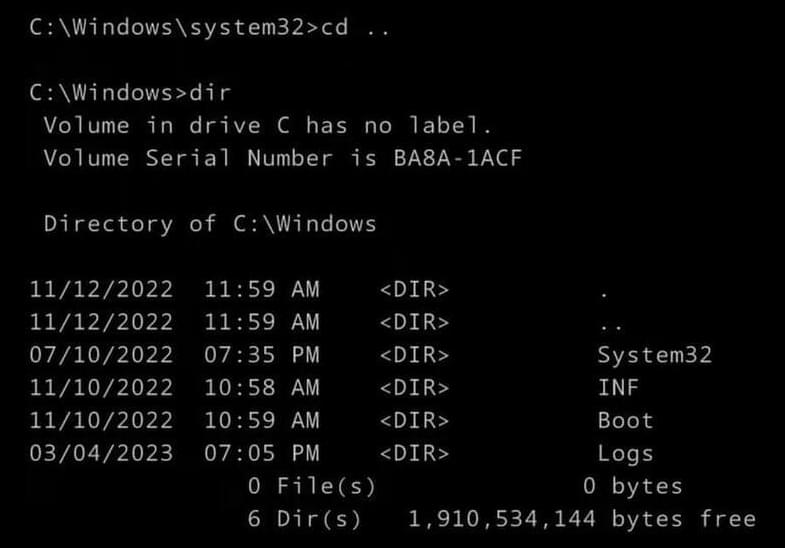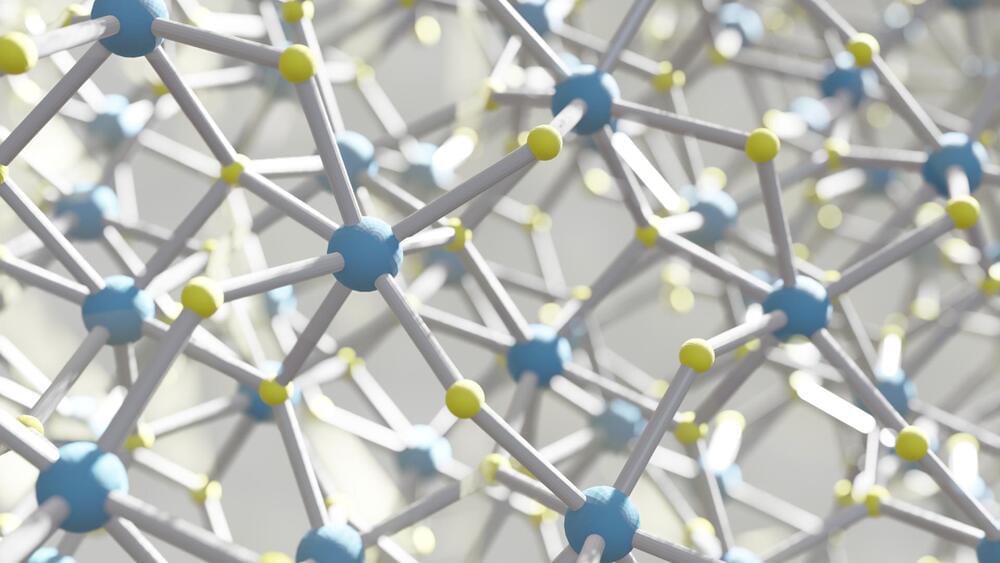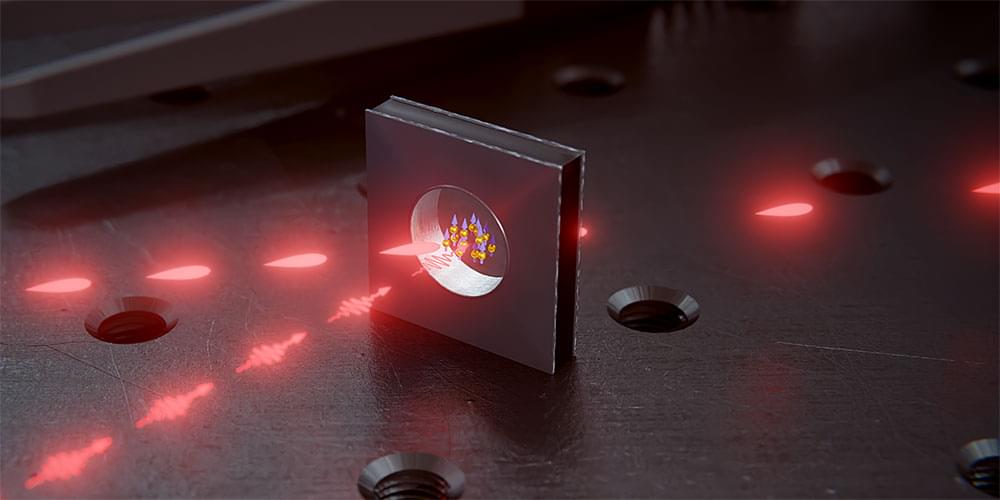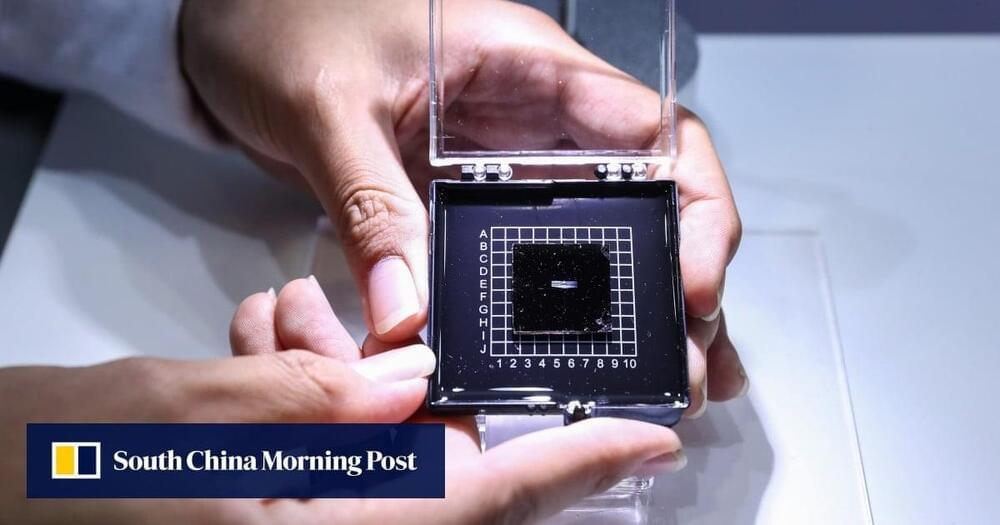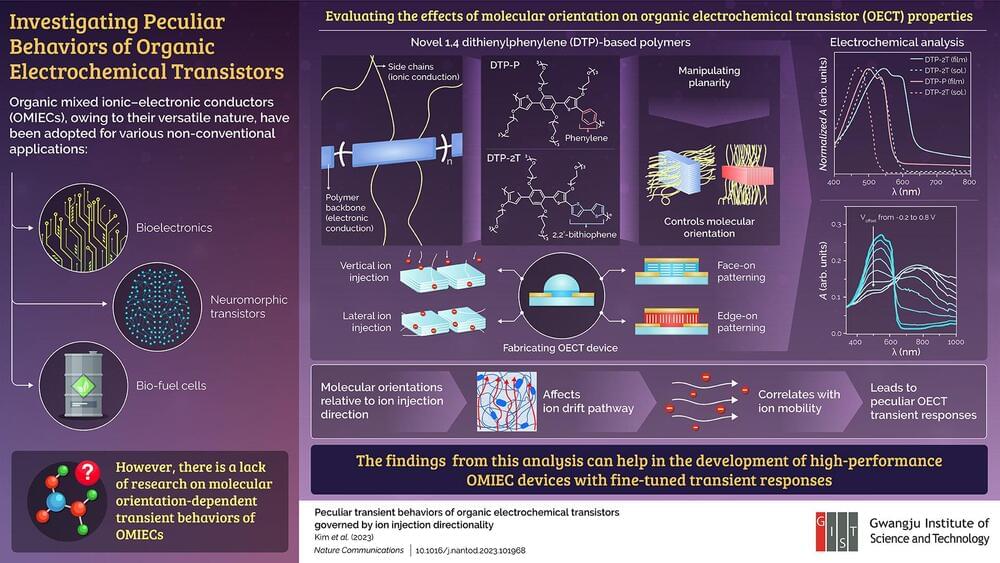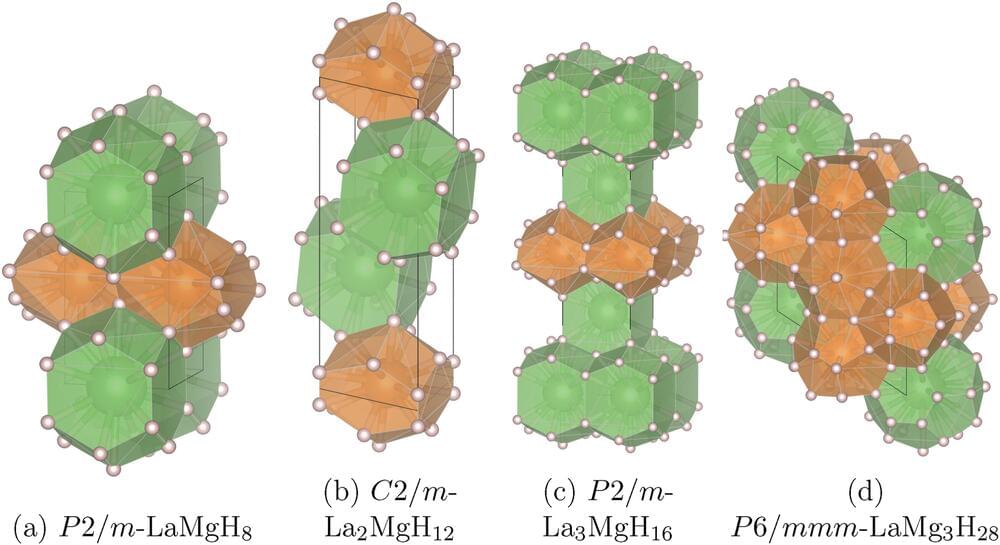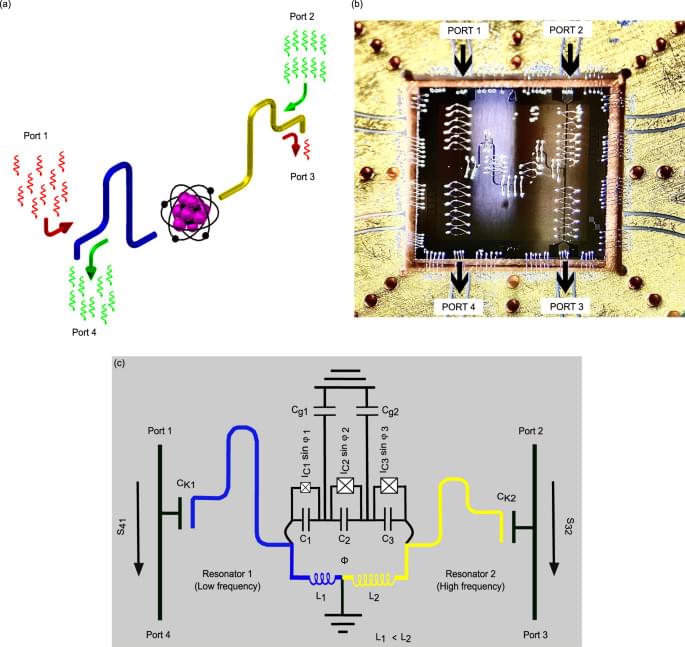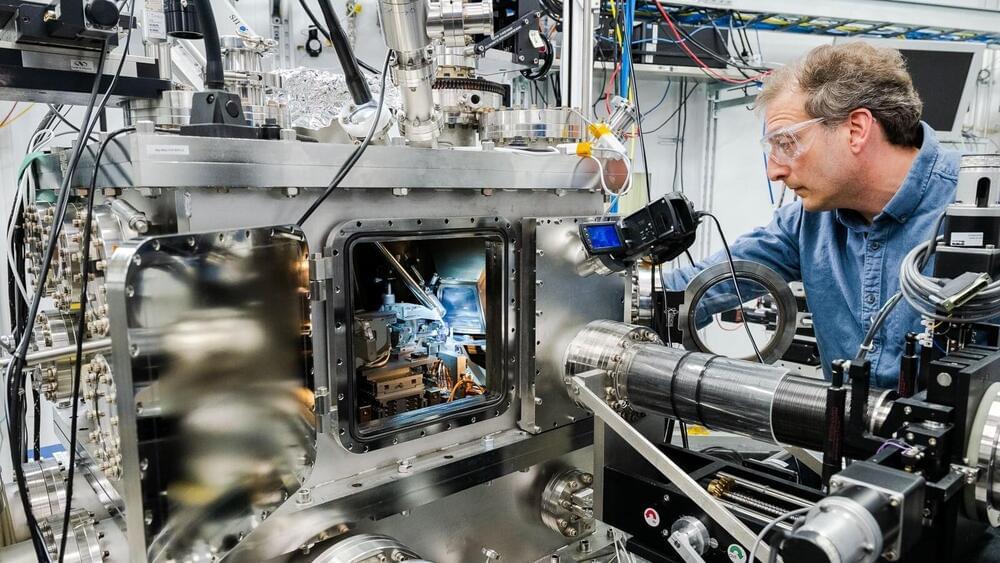Archive for the ‘computing’ category: Page 153
Jan 22, 2024
These hafnia molecules could pave the way for next-gen memory devices
Posted by Gemechu Taye in categories: computing, engineering
For the past decade, researchers have been exploring hafnia’s ferroelectric properties, particularly in a crystal phase where it exhibits electric polarization.
To revolutionize high-performance computing, scientists and engineers are making strides in harnessing the potential of hafnium oxide, commonly known as hafnia. The latest study outlines processes for manipulating hafnia, aiming to pave the way for the next generation of computing memory.
For the past decade, researchers have explored hafnia’s ferroelectric properties, particularly in a crystal phase exhibiting electric polarization.
Continue reading “These hafnia molecules could pave the way for next-gen memory devices” »
Jan 22, 2024
Mass-Producible Miniature Quantum Memory
Posted by Dan Breeden in categories: computing, encryption, mobile phones, quantum physics
PRESS RELEASE — It is hard to imagine our lives without networks such as the internet or mobile phone networks. In the future, similar networks are planned for quantum technologies that will enable the tap-proof transmission of messages using quantum cryptography and make it possible to connect quantum computers to each other.
Like their conventional counterparts, such quantum networks require memory elements in which information can be temporarily stored and routed as needed. A team of researchers at the University of Basel led by Professor Philipp Treutlein has now developed such a memory element, which can be micro-fabricated and is, therefore, suitable for mass production. Their results were recently published in the scientific journal Physical Review Letters.
Jan 22, 2024
Chinese scientists say they slowed down light to improve microchips
Posted by Dan Breeden in category: computing
Team designed a photonic chip in a way that reduced the speed of light by more than 10,000 times. That could boost performance and applications in light sensing, communications and computing.
Jan 22, 2024
Researchers investigate strange transient responses of organic electrochemical transistors
Posted by Genevieve Klien in categories: chemistry, computing
Organic mixed ionic–electronic conductors (OMIECs) are a highly sought-after class of materials for non-conventional applications, such as bioelectronics, neuromorphic computing, and bio-fuel cells, due to their two-in-one electronic and ionic conduction properties.
To ensure a much wider acceptance of these fascinating materials, there is a need to diversify their properties and develop techniques that allow application-specific tailoring of the features of OMIEC-based devices.
A crucial aspect of this process is to develop strategies for evaluating the various properties of these materials. However, despite the increasing popularity of OMIECs, there is a severe lack of research on the molecular orientation-dependent transient behaviors of such conductors.
Jan 22, 2024
Study probes unexplored combination of three chemical elements for superconductivity
Posted by Dan Breeden in categories: chemistry, computing, engineering, transportation
Skoltech researchers and their colleagues from MIPT and China’s Center for High Pressure Science and Technology Advanced Research have computationally explored the stability of the bizarre compounds of hydrogen, lanthanum, and magnesium that exist at very high pressures. In addition to matching the various three-element combinations to the conditions at which they are stable, the team discovered five completely new compounds of hydrogen and either magnesium or lanthanum only.
Published in Materials Today Physics, the study is part of the ongoing search for room-temperature superconductors, the discovery of which would have enormous consequences for power engineering, transportation, computers and more.
“In the previously unexplored system of hydrogen, lanthanum, and magnesium, we find LaMg3H28 to be the ‘warmest’ superconductor. It loses electrical resistance below −109°C, at about 2 million atmospheres—not a record, but not bad at all either,” the study’s principal investigator, Professor Artem R. Oganov of Skoltech, commented.
Jan 22, 2024
Europe faces ‘decades’ trying to rid itself of its global semiconductor chip dependency, major tech consulting chief says
Posted by Dan Breeden in category: computing
Capgemini’s CEO says Europe’s dependency on semiconductor imports will remain ‘huge’ for years to come.
Jan 21, 2024
Microwave quantum diode
Posted by Dan Breeden in categories: computing, engineering, quantum physics
Quantum engineering, a dynamic discipline bridging the fundamentals of quantum mechanics and established engineering fields has developed significantly in the past few decades. Two-level systems such as superconducting quantum bits are the building blocks of quantum circuits. Qubits of this type are currently the most researched and used in quantum computing applications1,2,3,4,5. The characteristics of the superconducting qubits such as eigen energies, non-linearity, coupling strengths etc. can be tailored easily by adjusting the design parameters6,7. Qubits have large non-linearity, which makes it possible to selectively address and control them1,3,7,8. This dynamic property makes superconducting qubits a strong candidate for plethora of applications. Other two-level microscopic quantum systems9,10,11,12,13,14 also have certain advantages and may be used in the future.
Quantum devices operate at low temperatures and require good isolation from external noises. Microwave devices, such as circulators and isolators, protect quantum circuits by unidirectionally routing the output signal, whilst simultaneously isolating noise from the output channel back to the quantum circuit. Their non-reciprocal character relies on the properties of ferrites15,16,17. Ferrite-based non-reciprocal devices are bulky15,16,17, and they cannot be positioned near the quantum circuit because they require strong magnetic fields. Although commercial ferrite based non-reciprocal devices harness high isolation and low insertion loss, their dependency on magnetic components limits the scalability of cryogenic quantum circuits15,16,18,19. Various ferrite-free approaches based on non-linear behavior of artificial atoms16, dc superconducting quantum interference devices (dc-SQUID)20,21, and arrays of Josephson junctions (JJ’s)19,22,23,24, have been experimentally demonstrated and implemented. Recently, a circuit based on semiconductor mixers has been used to realize a compact microwave isolator, which the authors claim could be extended to an on-chip device using Josephson mixers, although the “on-chip” demonstration is not yet reported25. Additionally, mesoscopic circulators exploiting the quantum Hall effect to break time-reversal symmetry of electrical transport in 2D systems are explored at a cost of larger magnetic fields deleterious to superconducting circuits18,26,27,28,29. More recently, a passive on-chip circulator based on three Josephson elements operating in charge-sensitive regime was demonstrated30. Such devices are frequently limited by their parameter regime, leaving them charge sensitive and therefore difficult to implement in a practical scenario. However, it is possible to mitigate the charge-sensitivity by carefully tuning the device parameters. Our device operates in a parameter regime that is not sensitive to charge fluctuations or charge parity switching, a fundamental requirement for any practical implementation, and requires small magnetic field. The reported device is a proof of concept (PoC), potentially useful in the applications relevant to microwave read-out components in the field of superconducting quantum circuits.
In this work, we present a robust and simple on-chip microwave diode demonstrating transmission rectification based on a superconducting flux qubit8. The concept of the device is shown in Fig. 1a. The flux qubit is inductively coupled to two superconducting resonators of different lengths with different coupling strengths. The design details are reported later in this section. Probing the qubit at the half-flux (degeneracy point) with one tone-spectroscopy, we observe identical patterns of transmission coefficient for signals propagating in the opposite directions, which are shifted by 5 dB in power. This shift indicates the non-reciprocal behaviour in our device, expressed in terms of transmission rectification ratio ® in this article. The origin of this effect is the non-linearity of the flux qubit, which controls the transmission coefficient of the whole structure.
Jan 21, 2024
TSMC 2nm Update: Two Fabs in Construction, One Awaiting Government Approval
Posted by Genevieve Klien in categories: computing, finance, government
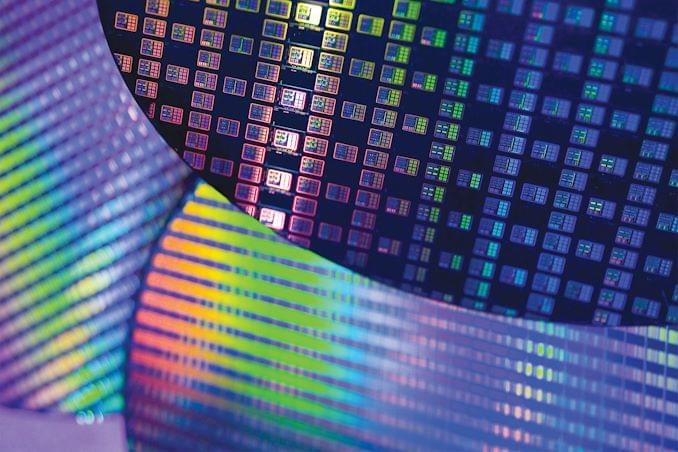
When Taiwan Semiconductor Manufacturing Co. (TSMC) is prepping to roll out an all-new process technology, it usually builds a new fab to meet demand of its alpha customers and then either adds capacity by upgrading existing fabs or building another facility. With N2 (2nm-class), the company seems to be taking a slightly different approach as it is already constructing two N2-capable fabs and is awaiting for a government approval for the third one.
We are also preparing our N2 volume production starting in 2025,” said Mark Liu, TSMC’s outgoing chairman, at the company’s earnings call with financial analysts and investors. “We plan to build multiple fabs or multiple phases of 2nm technologies in both Hsinchu and Kaohsiung science parks to support the strong structural demand from our customers. […] “In the Taichung Science Park, the government approval process is ongoing and is also on track.”
Continue reading “TSMC 2nm Update: Two Fabs in Construction, One Awaiting Government Approval” »
Jan 21, 2024
Scientists create qubits using precision tools of nanotechnology
Posted by Dan Breeden in categories: computing, nanotechnology, quantum physics
Silicon carbide is becoming a major player on the quantum scene. Widely used in specialized electronics goods such as LEDs and electric vehicles, silicon carbide boasts versatility, wide commercial availability, and growing use in high-power electronics, making it an attractive material for quantum information science, whose impact is expected to be profound.
Drawing on physics at the atomic scale, technologies such as quantum computers, networks, and sensors will likely revolutionize areas as varied as communication, drug development, and logistics in the coming decades.
Now, scientists at the U.S. Department of Energy’s (DOE) Argonne National Laboratory, DOE’s Sandia National Laboratories, and partner institutions have conducted a comprehensive study on the creation of qubits—the fundamental units of quantum information processing—in silicon carbide.
